High marks for Malizia in The Ocean Race
Published on April 21st, 2023
Boris Herrmann launched his IMOCA five months before the start of The Ocean Race, and there remained plenty of unknowns before the 12750 nm Leg 3 from Cape Town, South Africa to Itajaí, Brazil. Considering the extreme conditions found in the southern oceans, it would be a test that Team Malizia passed by, after 35 days at sea, being first to Brazil.
As the only new boat designed by the VPLP firm, partner naval architect Quentin Lucet offers what has been learned thus far:
What was the mindset aboard as the crew prepared to take on Leg 3?
They had confidence in the boat but, like all the teams, they wondered how the new generation IMOCAs were going to cope with the next stage. No one knew for sure because this was the first time they had gone into the southern latitudes, and it was going to be the longest ever leg in The Ocean Race. So there was an unknown factor.
Was it also a moment of truth for VPLP Design?
Absolutely! At stake was knowing whether we had succeeded in putting together a project with the right compromises and the right choices. All our reflections concerning Malizia’s design and architecture focused on producing good reaching performance in a breeze without reducing the potential of the other points of sail in heavy seas, so as to maintain the boat’s versatility.
Can you tell us more about this compromise?
On a broad reach VMG, the hull is predominant and the foils are merely a support. However when the wind is before the beam, the appendages take the lead, providing most of the power, and thus the boat takes off earlier. Nowadays, the right compromise is to make a hull which really works well on a broad reach, without compromising the other points of sail (see the article below).
What was it like for your office to follow this extended leg?
Several days after the start, the damage on the mast [a tear at the masthead – ed.] was serious enough to force a withdrawal from the race. They undoubtedly considered the question aboard Malizia. Once they managed to carry out a repair, the length of the leg suddenly became an opportunity.
A little over a week after the start, the boats came within sight of each other, giving a fresh impetus to the race. And then the conditions became what you would expect in the Southern Ocean. We were able to validate the concept, in particular from observing videos made using the drone they had on the boat.
Apart from the aerial images of Banque Populaire VIII and Hugo Boss taken during the 2016-17 Vendée Globe, we had never really seen IMOCAs from the outside in big seas. How does the boat enter the sea? Does she slam into the incoming wave? What are her dynamic attitudes? We were really delighted to see the boat behaving like the models in our dynamic simulations.
So performance was above average when reaching in strong winds?
Yes, it’s very positive on that side, but what I recall most from that leg was realizing how comfort is becoming a performance factor. The 2020 Vendée Globe showed us that skippers never got into a good rhythm in the south. These races are very long. If after thirty or forty days at sea you’re only getting 70% of the boat’s potential, there’s no point having designed an engineer’s boat, one that’s the fastest on paper.
Our naval architecture tools quantify each performance factor with precision, except for that aspect. As such, it becomes a question of feeling, of talking to the skipper, almost of philosophy. My current thinking is that, given where the IMOCAs have got to in terms of performance, making the best possible boat and counting on the guy at the wheel to adapt to it isn’t necessarily a recipe for success in these round-the-world races.
On the shipboard videos of the other boats, you can clearly see them accelerating and decelerating, which must be physically very difficult because of the brutal fore-and-aft movements they generate. It doesn’t seem to be so brutal on Malizia. And when you start talking about comfort, there is another factor that needs to be considered: ergonomics.
Boris (skipper Boris Hermann) insisted on having plenty of freeboard and a cockpit that you could stand up in. You can clearly see in the shipboard images how the adopted solutions are more liveable and less tiring for the crew compared to the other boats where the crew are often bending over or on all fours.
In addition to the videos, how else do you monitor the races?
Shore assistance is prohibited in The Ocean Race, so all the work remains in-house without any discussion with the boat. In any case, measuring performance in the strictest sense is very difficult because of the changing condition of the equipment.
For example, Malizia lost a code zero at the start of the leg and then they had the mast damage. On the other hand, we had direct access to all the stress data for the rigging, the foils, and the bottom of the hull.
We had a debriefing at the end of each stage to check whether the composite had undergone greater stresses than we expected. This allowed us to target the non-destructive ultrasonic tests we carried out during the stopover. What was very positive was that our assumptions concerning the sizing of the structure were validated. The boat never went into the red.
Does that mean that there could be a lighter version?
With this set-up of the appendages, we have no reason to do it differently. What’s more, on Armel Tripon’s future IMOCA, which will be built in the moulds used for Malizia, we won’t be looking to make weight savings in this area. The changes will involve the layout of the deck and the helm station, where we’ll be able to reduce somewhat the amount of material used.
What are your impressions of this first edition with IMOCAs?
The results are very positive. There was, of course, this great win in a historic leg. It was a source of immense satisfaction for Boris, his team, and VPLP Design. The atmosphere at the office coffee machine on the Monday following the finish was really good!
Prior to the start, we had absolutely no certainties as to the design, which is one of the great things about our profession: every time we make a new boat, we are writing a new page in history and the race is the verdict. That’s when the design gets validated.
The boats are on the whole robust and the systems are reliable. They are being operated to their full potential, resulting in the 24 Hour Distance Record being broken several times. The question now is what percentage of the performance potential will the solo skippers in the Vendée Globe be able to squeeze out of their machines? Will they be able to get as much out of them? Will the differences in design generate greater differences in single-handed events? We don’t have the answers for the moment.
Architect with VPLP Design since 2010, Daniele Capua provides additional insight regarding Malizia’s hull:
Subsequent to the difficulties the skippers encountered in the heavy seas of the 2020 Vendée Globe, many of the IMOCA bow sections were reworked and some of the 2022 generation boats opted for fuller lines. “Working solely on the bow section is not enough,” explains Capua.
“It doesn’t really modify the boat’s dynamic trim. And anyway, if you force a 2020-generation boat to porpoise, the drag, induced in particular by the stern lines, has a very negative effect on performance.”
Instead, you need to focus on the general distribution of the volumes, which is a tricky thing to analyze from the outside. “Many observers think that Malizia has a lot of volume forward. And yet she’s the least scow-like IMOCA, being narrower at the deck in the first few metres, while the gentle rise of her forefoot makes water penetration more gradual.”
Her keel line is more banana-like with considerable rocker and narrower lines in the transom section to press the stern into the water. In short, a fuller hull which has benefits and also disadvantages.
“We have never spent so much CFD time on a project as we did on Malizia,” says Capua. “The advantages of this hull shape when broad reaching in strong winds and heavy seas appear very clearly in the dynamic simulations. The boat porpoises, the bow doesn’t act like a pivot when it digs in, and the speed is more linear.
“But on a smooth sea with the wind before the beam, the hull performs less well than the former Hugo Boss, our reference boat for the analysis. Boris made a philosophical choice and assumes full responsibility.”
It’s a choice that could also pay off in light winds because these hulls create less drag in the sharper angles than the tauter IMOCAs. Which, says the architect, “remains a purely relative advantage when you look at the points of sail of a Vendée Globe event, where light winds are uncommon.”
Overall Leaderboard (after 3 of 7 legs)
1. Team Holcim-PRB — 19 points
2. Team Malizia — 14 points
3. 11th Hour Racing Team — 13 points
4. Biotherm — 10 points
5. GUYOT environnement – Team Europe — 2 points
Race details – Route – Tracker – Teams – Content from the boats – YouTube
IMOCA: Name, Design, Skipper, Launch date
• Guyot Environnement – Team Europe (VPLP Verdier); Benjamin Dutreux (FRA)/Robert Stanjek (GER); September 1, 2015
• 11th Hour Racing Team (Guillaume Verdier); Charlie Enright (USA); August 24, 2021
• Holcim-PRB (Guillaume Verdier); Kevin Escoffier (FRA); May 8, 2022
• Team Malizia (VPLP); Boris Herrmann (GER); July 19, 2022
• Biotherm (Guillaume Verdier); Paul Meilhat (FRA); August 31 2022
The Ocean Race 2022-23 Race Schedule:
Alicante, Spain – Leg 1 (1900 nm) start: January 15, 2023
Cabo Verde – ETA: January 22; Leg 2 (4600 nm) start: January 25
Cape Town, South Africa – ETA: February 9; Leg 3 (12750 nm) start: February 26
Itajaí, Brazil – ETA: April 1; Leg 4 (5500 nm) start: April 23
Newport, RI, USA – ETA: May 10; Leg 5 (3500 nm) start: May 21
Aarhus, Denmark – ETA: May 30; Leg 6 (800 nm) start: June 8
Kiel, Germany (Fly-By) – June 9
The Hague, The Netherlands – ETA: June 11; Leg 7 (2200 nm) start: June 15
Genova, Italy – The Grand Finale – ETA: June 25, 2023; Final In-Port Race: July 1, 2023
The Ocean Race (formerly Volvo Ocean Race and Whitbread Round the World Race) was initially to be raced in two classes of boats: the high-performance, foiling, IMOCA 60 class and the one-design VO65 class which has been used for the last two editions of the race.
However, only the IMOCAs will be racing round the world while the VO65s will race in The Ocean Race VO65 Sprint which competes in Legs 1, 6, and 7 of The Ocean Race course.
Additionally, The Ocean Race also features the In-Port Series with races at seven of the course’s stopover cities around the world which allow local fans to get up close and personal to the teams as they battle it out around a short inshore course.
Although in-port races do not count towards a team’s overall points score, they do play an important part in the overall rankings as the In-Port Race Series standings are used to break any points ties that occur during the race around the world.
The 14th edition of The Ocean Race was originally planned for 2021-22 but was postponed one year due to the pandemic, with the first leg starting on January 15, 2023.
Source: TOR

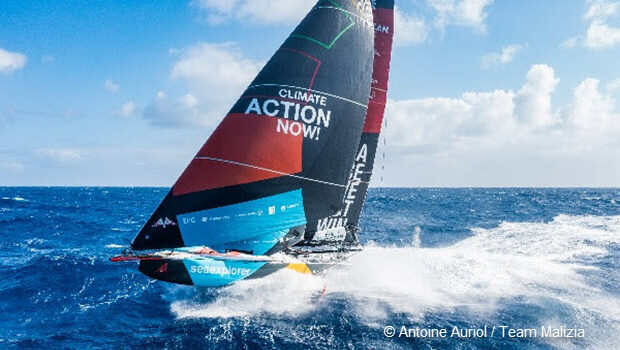


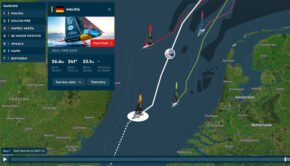
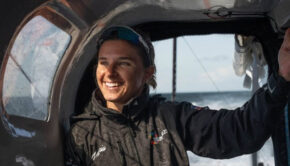
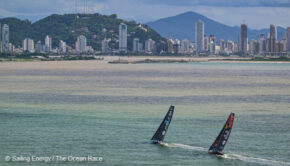
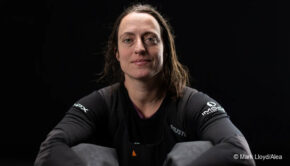
 We’ll keep your information safe.
We’ll keep your information safe.